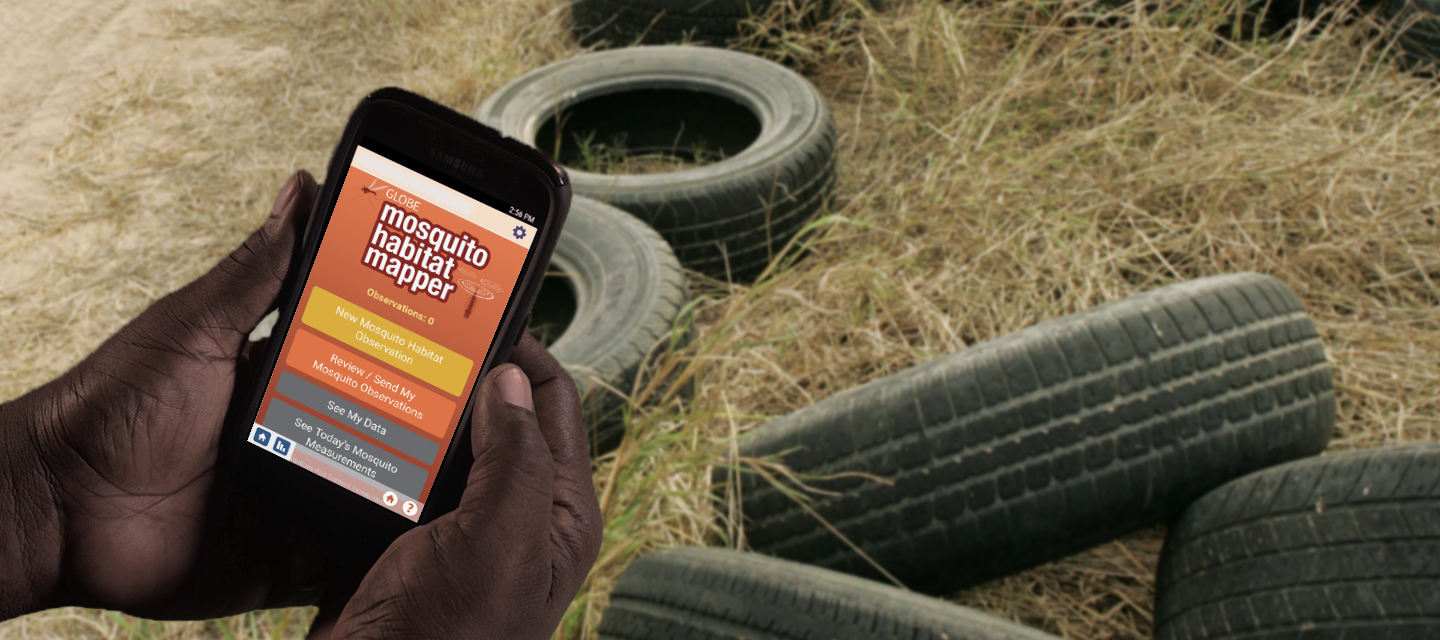Mosquito Habitats Overview - GLOBE Observer
What is GLOBE Mosquito Habitat Mapper?

GLOBE Mosquito Habitat Mapper is an app-based tool that will help you document mosquito habitats and identify mosquito types. Once you have downloaded the GLOBE Observer app and created an account, the Mosquito Habitat Mapper tool will guide you through the observation process. The main required element is to look for a possible mosquito breeding habitat (standing water or somewhere water could collect), and report if you see any mosquito larvae in the water. Optionally, you can sample and count the larvae and try to identify the mosquito type, both of which will require additional equipment. Even a basic observation without optional elements is valuable! If possible, we also ask you to eliminate the mosquito breeding habitat. For more details about how to take observations, including tips and tricks, additional tutorials beyond what is in the app, and frequently asked questions about how to observe, visit the Taking Observations page. Our Resource Library includes additional activities, references, videos and book lists.
Why are my observations important?
Mosquitoes are a serious health risk: millions of people die each year from mosquito-borne disease. While climate and weather conditions can suggest to scientists where to expect spikes in mosquito populations during the year, we don’t know for sure what is happening unless we make observations on the ground. By reporting possible mosquito habitats through the app, GLOBE Observers are able to augment broad scale satellite-based research with highly targeted local ground-based observations.
Student Research
In addition to research done by professional scientists, because GLOBE Observer is part of The GLOBE Program, which is active in thousands of schools across the world, citizen scientists are strengthening science education by providing data for student research.
Here are a few examples of student research reports related to mosquitoes:
"The Relationship Between Weather Parameters, Normalized Difference Vegetation Index (NDVI), Land Cover, and Mosquito Born Diseases," by students Barnabas Mutuku, Jemima Kanini, Evelyn Nyambura, Junior Mahala, David Muhia and Sharon Makhoha from St. Scholastica Catholic School in Nairobi, Kenya; GLOBE Teacher Amos Kaui; submitted to GLOBE on 11 March 2020.
"Year 2020 Surveillance of Aedes albopictus vectors of Zika in urban area," by students from the University of Antanananarivo, in Antananarivo, Madagascar; GLOBE Teacher, Lala Sahondra Rafarasoa; submitted to GLOBE on 10 March 2020.
"Larval habitat characterization of Culex mosquitoes in parallel puddles along the Chimehuín River," by Marianela Pepe, Lucio Martinez, and Juan Wehinger, students from Science Club Huechulafquen (After School), in Junín de los Andes, Argentina; GLOBE Teachers, Ana Beatriz Prieto, Jorge Luis Pepe, María Graciela Sepúlveda; submitted to GLOBE on 09 March 2020.
"Distribution and Abundance of Mosquitoes in the World, Preliminary Report," by Marianela Pepe, Lucio Martinez, and Juan Wehinger, students from Science Club Huechulafquen (After School), in Junín de los Andes, Argentina; GLOBE Teacher, Ana Beatriz Prieto; submitted to GLOBE on 10 April 2019.
"Comparative Studies of Larvae of Mosquitoes present in the Gardinia's Urbanization," by students of the Semillero de Investigacion en Ciencias Espaciales, S.I.C.E, in Baranquilla, Colombia; GLOBE Teacher, Erquinio Alberto Taborda Martinez; submitted to GLOBE on 10 April 2019.
For a full listing of research reports on mosquitoes, visit the GLOBE Student Research Reports page (filtered by Mosquitoes protocol).








